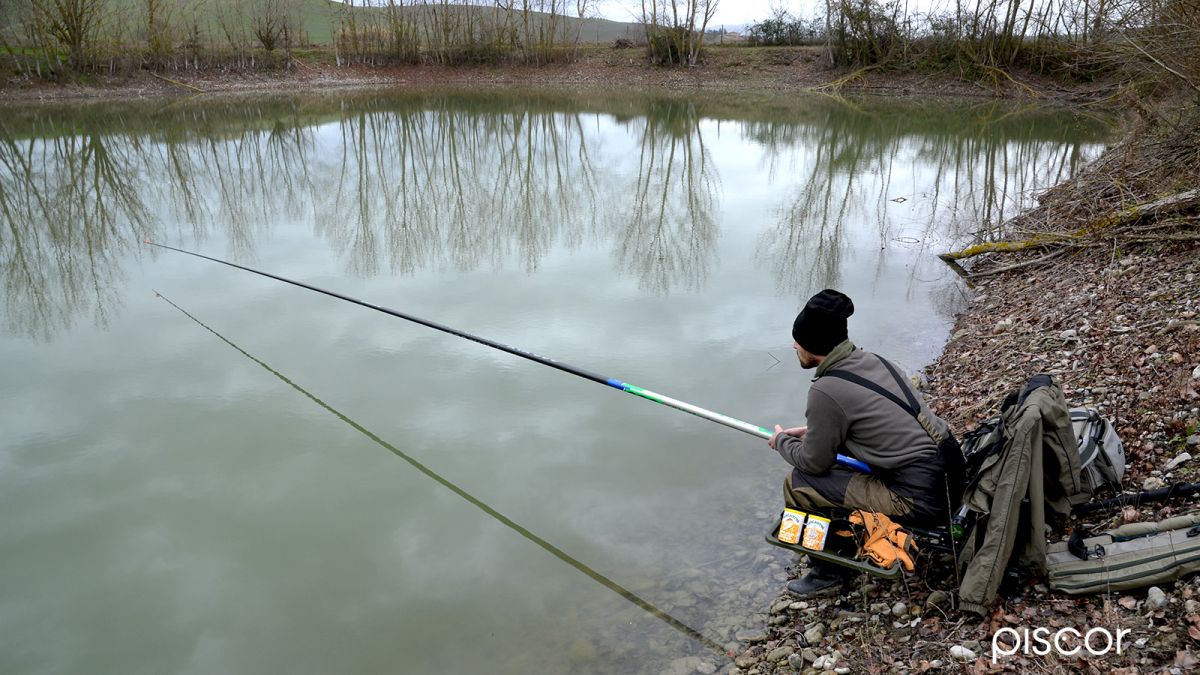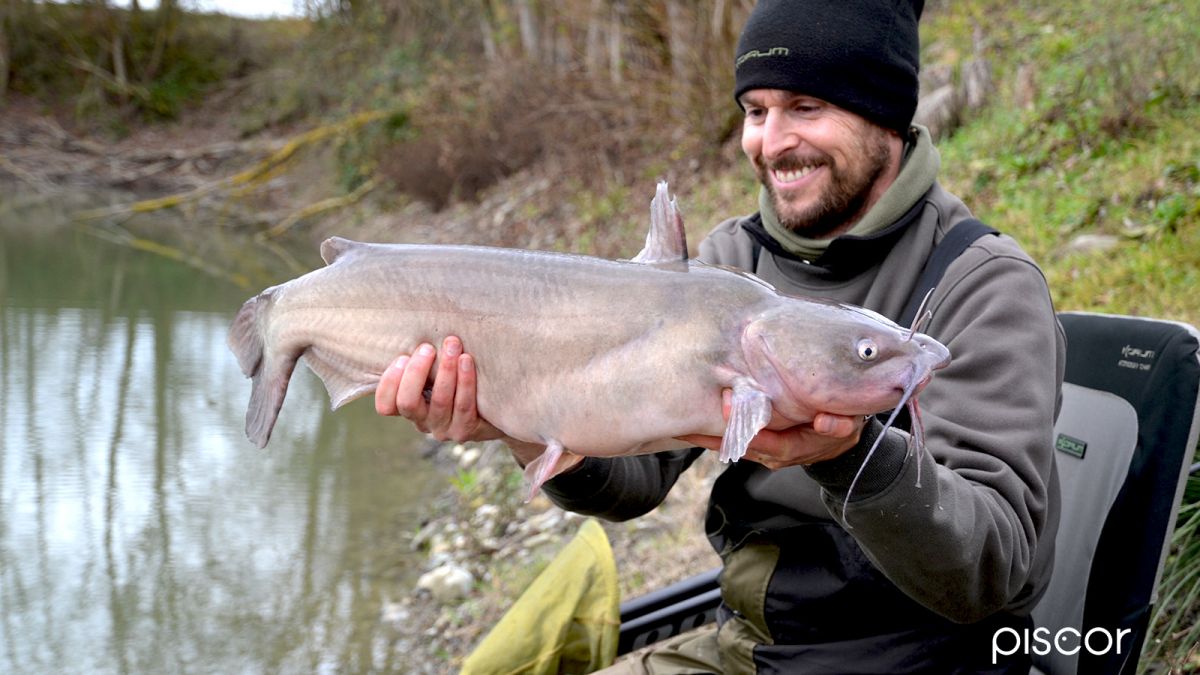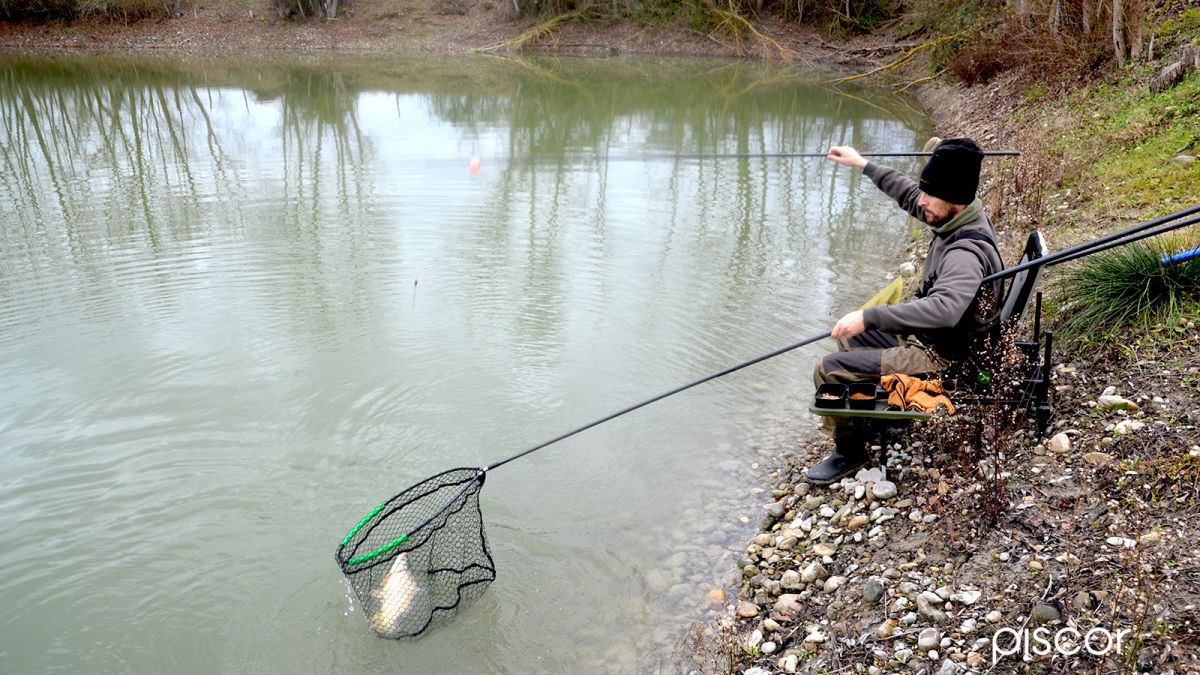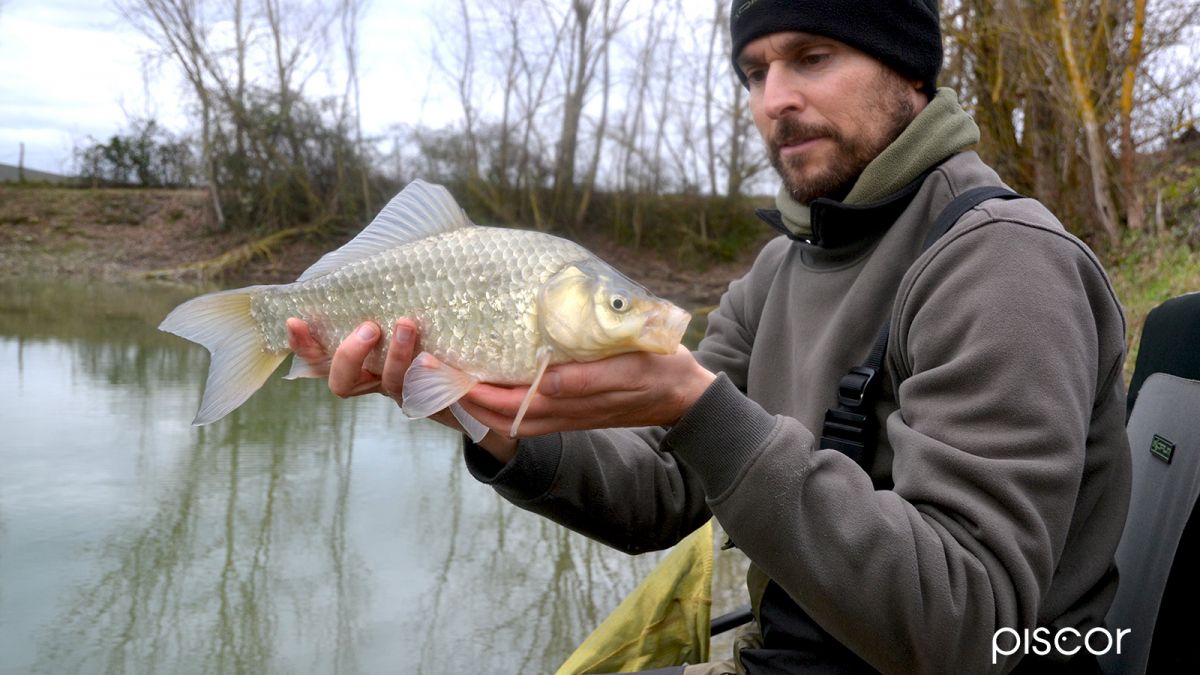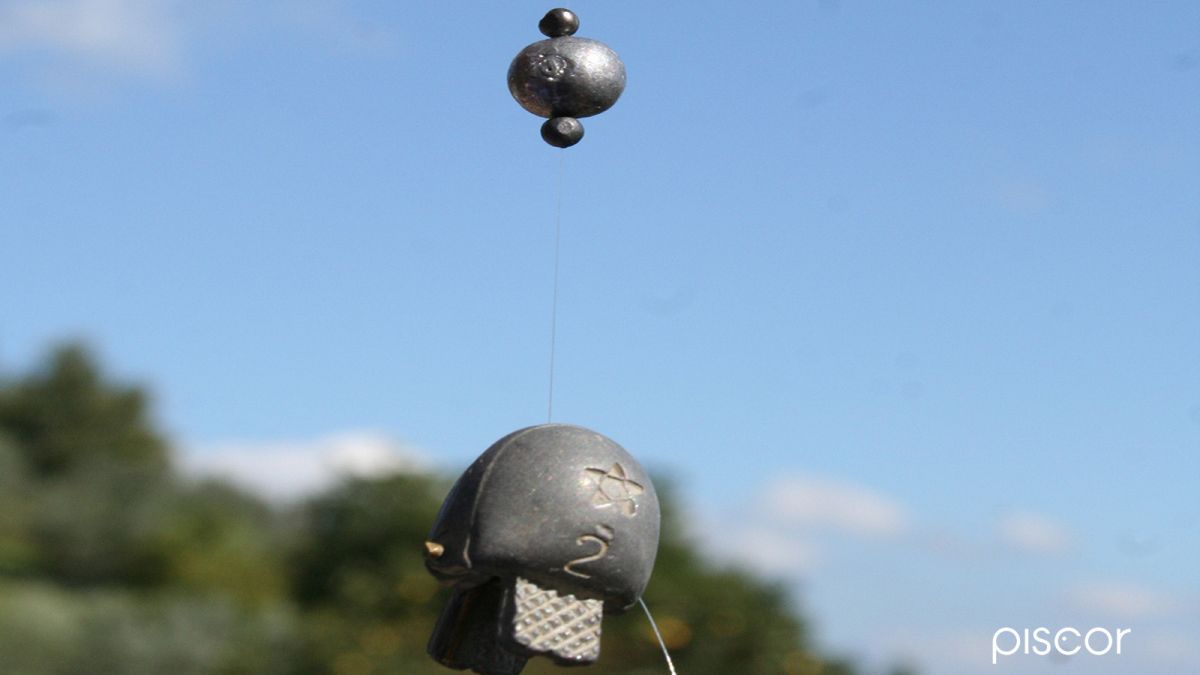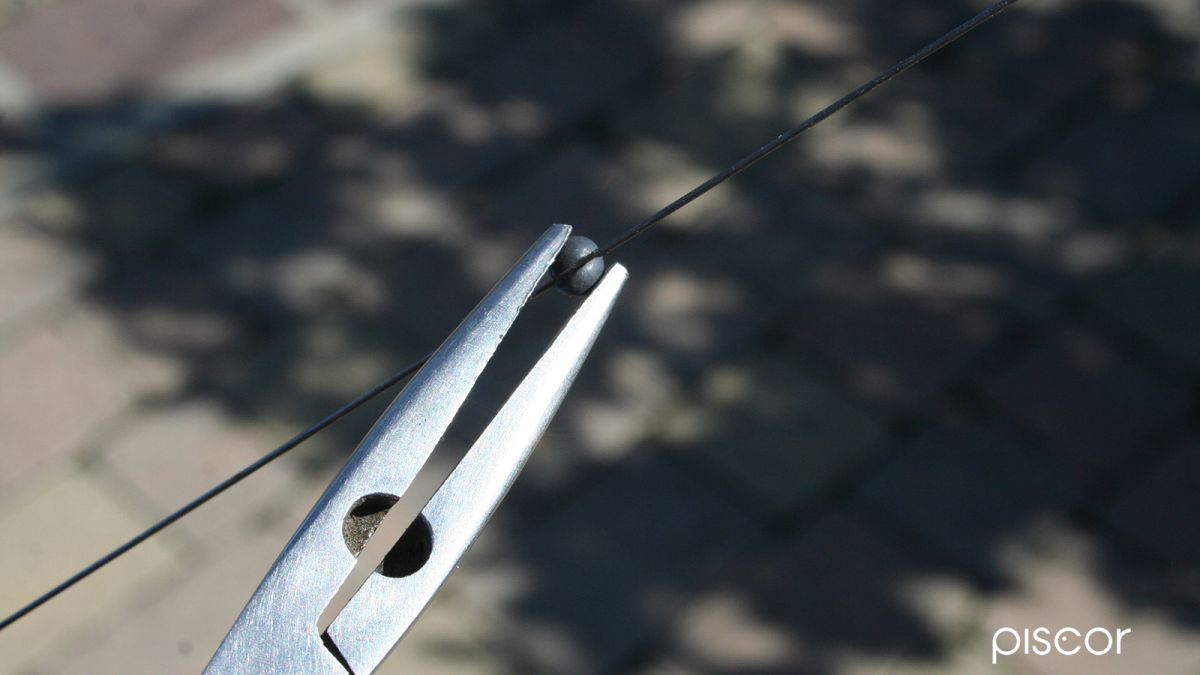Roubasienne fishing, but how? This time with a system that has some incredible for how much it is capturing especially with regard to the bottom species, first of all carp and crucians, but they all fall for it, even the most shrewd breams, in fact it is precisely the largest that most often leave us the fins.
Every now and then we return to it, but the subject is such that it is worth remembering it. We are talking about the off-tip fishing, that is the fishing that is done with the roubaisienne with a distance between the tip and the float (banniere) much longer than the canon meter (or not).
Why talk about it often? Simply because it is becoming of fundamental importance in many waters and not only for winter fishing in carpodrome or pond. One of these, for example, is the canal with still water or, in any case, not too much current for the search of the crucians and, not infrequently, to try a carp in the last stages of fishing, whether you are in competition or during a normal session.
The two species mentioned above, but also other purely bottom species, often have a typical reaction: for absolutely variable times are in the pasture to feed and since the roubaisienne the baiting is done right under the tip of the rod, can quite easily make catches, then, when it seems to them, suddenly become shy, lead to the outer edge of the pastured area and, often even one or more meters outside and it seems that they are spectators of a fireworks display that keep a safe distance. What to do in these cases depends on the fishing conditions.
For example, if fish aren't too far out and the wind doesn't blow, a banniere of a couple of meters and a solid fishing line can give us a few more catches. This is a good solution, but if you are forced to put too much weight on it because there is a burr of lateral or opposite wind, or because the fish are very far away and you cannot lay a light fishing line, the results will be disappointing.
In still waters the solution that we have presented several times is the adoption of a very special float like the Baldin, the long one with a mobile part on the antenna that allows exceptional stability even with a banniere of 4 meters. We find that this strange float has really made a step forward in off-tip fishing and is never missing in my stocks of lines for winter fishing in pond, especially when it becomes essential to give some upward and downward movement to the rig.
The technique we are going to describe is nicknamed "trap" in the world of carpodrome competitions.
What does it look like?
From a technical point of view, the "trap" is rather simple to build because its strengths consist of two almost elementary lead sections, consisting of two spherical leads of different weights stopped on the wire by very small pellets. The lower section will rest on the bottom, the other will be slightly raised by this.
Simple construction, but rigorous in its relationships and distances. The construction of the line is done in this way: after putting the float on the wire, you insert the biggest bale (we will talk about weights later) that will have to be lifted from the bottom and then the second (the one to be placed).
The buttonhole for the final is made and then two very small shot leads are applied (n°12 or 13), the first one at about 15-20 cm from the buttonhole, the second one on top of the small shot (let's call it so) so that it can have a free flow equal to the length of the antenna of the float adopted. At a distance varying from 40 to 60 cm from the first one, the largest lead is fixed with shot leads that lead to the complete calibration of the float, which must be done taking into account the part that is then placed on the ground. The line ends with a final length of 25 to 35 cm.
Seabed measurement
This is done by applying a clamping probe to the lowest pellet of those blocking the upper buckshot, moving it three or four centimeters downwards. The fact of moving this shot lead downwards is of fundamental importance, it serves to make the measurement so that then the main mass of the plumbing is raised from the bottom at least a few centimeters.
Since we will be fishing with a long banniere, therefore well outside the tip, the measurement of the bottom, especially if it is on a slope, may require more than one test, while if we know that the bottom is absolutely flat, just take the measurement under the tip of the rod.
The measurement on several occasions is necessary because three or four centimeters of lifting from the bottom, those of the main lead, are very few, but fundamental. It is enough to have a soft bottom in which the probe sinks and we will have an incorrect measurement, therefore, we must arm ourselves with patience, but we will enjoy the fruits in fishing.
Weights and lead ratios
To carry out the tests of this technique, we went to fish in a canal that is climbing in the evaluations of fishermen and those who organize competitions, so that today is the scene of important events at national level.
One of the characteristics of the spot is that it is greatly influenced by the tides, because it flows into the sea. For this reason, it is necessary to be adequately prepared both with light lines, to be used in the intervals of tide with still water, and with heavier lines and sometimes even sails of several grams are needed to fish well.
That's why we set up "traps" ranging from about one gram to three grams. The surprising thing about this mounting is that even with a very light weight, thanks to the concentration of the lead, it is possible to push the line out easily and, above all, to keep it steady even with a little wind thanks to the important portion resting on the ground, which can be summarized as follows: 25-35 cm rig, 15-20 cm from the buttonhole to the first lead, 40-60 cm from the first to the second lead. In all, it makes from 80 to 115 cm of leaning line that is definitely a good anchorage, even if you are fishing with very light equipment.
And now we come to the most delicate part, that of the dimensional ratio between the section of lead resting and that raised from the bottom. The first must be smaller than the second, this is clear, but by how much?
For very light lines, around a gram, the difference is small. Let's say that the ideal subdivision is about 35% for the lead to be laid and 65% for the other. For heavier lines the percentage difference may be greater given the greater stability of such a mounting.
How to make the "shot"
The spherical leads called shot are easily available in any shop, more difficult to find than those measuring fractions of a gram. Making them is, however, extremely simple, all you need is a pincer and a float with a harmonic steel drift.
You put the drift of the float in the crack of a normal lead pellet and then you crush. The slit will close, but in the central part there will be the hole through which the wire will pass.
Don't worry if the pellet will assume an irregular shape and will not be perfectly spherical, because this shape will hold much more the bottom in case of current!
Advantages of the method
There are many of them. First of all, the ease with which you spread even a very long banniere and then the extreme stability of the system, very resistant even to the headwind. Secondly, the distances that can be reached that are not equal to the length of the banniere, but to this must be added also the 80-115 cm of the part resting on the bottom.
Then we must consider the excellent sensitivity of the system with the lead resting that, being sliding, is not at all heard by the fish during the bite. These are characteristics that must be taken into account when fishing is really difficult, something that happens not only in winter, but in all seasons and that are the order of the day on any field of competition subject to strong pressure.
What if it doesn't show?
Despite the portion resting on the bottom, when the system is fishing and the wire is slightly tensioned, the float goes fishing regularly, or rather, if it does not and is slightly cleared for the amount of ballast supported, you must make sure, by properly maneuvering the tip of the rod, that it is almost "bubble".
Otherwise we would always arrive late on the eaten one. The problem is that we fish very lightly with floats equipped with thin antenna and the visibility can be heavily affected.
Let's not forget that we fish at a distance of 13 meters of rod plus 3 or 4 of the banniere with almost drowned float. For this reason it is good to have with you some system that amplifies the vision of the float. One of those that we found extremely valid is the application to the antenna of small drops or cylinders in a kind of foam in fluorescent colors. They have a range practically equal to zero, but make the antenna of the float perfectly visible even in the worst light conditions.

